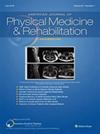实习与美国物理医学与康复委员会认证考试成绩的关系。
IF 2.2
4区 医学
Q1 REHABILITATION
American Journal of Physical Medicine & Rehabilitation
Pub Date : 2024-09-04
DOI:10.1097/phm.0000000000002641
引用次数: 0
摘要
物理医学与康复(PM&R)住院医师必须在开始 PM&R 住院医师培训之前完成 12 个月的基本技能培训。本研究的目的是确定研究生一年级(PGY-1)的特点是否会影响美国物理医学与康复医师协会(ABPMR)初次认证考试的成绩。研究人员对 2008 年至 2022 年期间完成 PM&R 住院医师培训并参加第一部分考试的医师的 ABPMR 数据库进行了回顾性审查。与完成高级课程的医生相比,完成 PM&R 分类住院医师培训课程的医生的第一部分考试通过率更高。与完成过渡性或非过渡性高级课程的医生相比,完成分类课程的医生在第二部分考试中的比例分数更高,但通过率并无差异。与完成3个月或3个月以上内科培训的医生相比,在开始从事PM&R之前完成少于3个月内科培训的医生的第一部分和第二部分考试成绩较低。完成 6 个月或 6 个月以上内科培训的医生比完成 6 个月或 6 个月以上外科培训的医生通过第一部分和第二部分考试的比例分数更高。本文章由计算机程序翻译,如有差异,请以英文原文为准。
Association of internship with performance on American Board of Physical Medicine and Rehabilitation certification examinations.
Physical Medicine and Rehabilitation (PM&R) residents must complete twelve months of fundamental skills training prior to beginning PM&R residency. The objective of this study is to determine if characteristics of the first post-graduate year (PGY-1) impact performance on American Board of PM&R (ABPMR) initial certification examinations. A retrospective review was conducted on a deidentified ABPMR database of physicians who completed PM&R residency and took the Part I Examination between 2008 and 2022. Physicians who completed categorical residency programs in PM&R had higher pass rates on Part I than physicians who completed advanced programs. Physicians who completed a categorical program had higher scaled scores on the Part II Examination than physicians who completed either a transitional or non-transitional advanced program but pass rates did not differ. Completing less than 3 months of training in internal medicine prior to starting PM&R was associated with lower Part I and Part II Examination scaled scores than completing 3 or more months. Physicians who completed six or more months of internal medicine had higher Part I and Part II Examination pass rates and scaled scores than physicians who completed six or more months in surgery.
求助全文
通过发布文献求助,成功后即可免费获取论文全文。
去求助
来源期刊
CiteScore
4.60
自引率
6.70%
发文量
423
审稿时长
1 months
期刊介绍:
American Journal of Physical Medicine & Rehabilitation focuses on the practice, research and educational aspects of physical medicine and rehabilitation. Monthly issues keep physiatrists up-to-date on the optimal functional restoration of patients with disabilities, physical treatment of neuromuscular impairments, the development of new rehabilitative technologies, and the use of electrodiagnostic studies. The Journal publishes cutting-edge basic and clinical research, clinical case reports and in-depth topical reviews of interest to rehabilitation professionals.
Topics include prevention, diagnosis, treatment, and rehabilitation of musculoskeletal conditions, brain injury, spinal cord injury, cardiopulmonary disease, trauma, acute and chronic pain, amputation, prosthetics and orthotics, mobility, gait, and pediatrics as well as areas related to education and administration. Other important areas of interest include cancer rehabilitation, aging, and exercise. The Journal has recently published a series of articles on the topic of outcomes research. This well-established journal is the official scholarly publication of the Association of Academic Physiatrists (AAP).

 求助内容:
求助内容: 应助结果提醒方式:
应助结果提醒方式:


